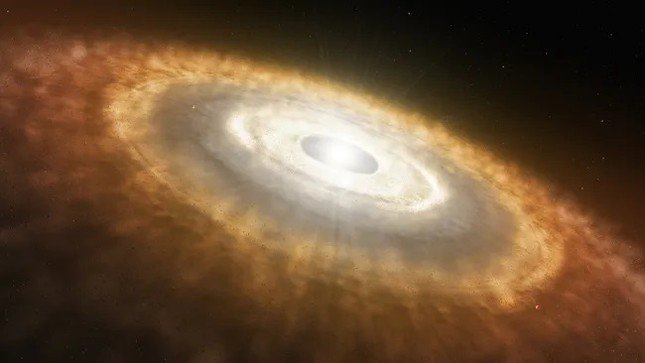The James Webb Telescope has captured images of two giant asteroids colliding with a nearby star system. This photo may help us understand how common solar systems like ours are.
The James Webb Telescope (JWST) has found evidence of two giant asteroids colliding in a nearby star system. The giant impact released 100,000 times more dust than the impact that killed the dinosaurs. The violent collision occurred recently in Beta Pictoris, a star system located 63 light years away in the constellation Pictoris.

Illustration of a protoplanetary disk, similar to the one studied by the James Webb Telescope in new observations of the star system Beta Pictoris. (Photo: ESO)
Beta Pictoris is a "baby" compared to our own solar system - having existed for only 20 million years compared to our own solar system's respectable 4.5 billion years. It was first discovered in 1983 by NASA's Infrared Astronomical Satellite (IRAS) spacecraft and is believed to have formed from the shock wave of a nearby supernova.
Although the young star system now has at least two gas giants, it has no known rocky worlds like our own. But rocky inner planets may be in the process of forming, thanks to large dust-generating collisions like the one detected by JWST. This new discovery was recently presented at the 244th Meeting of the American Astronomical Society in Madison, Wisconsin.
To take a snapshot of the distant asteroid impact, astronomers trained JWST's camera and discovered that giant clumps of silicate dust were detected by the Spitzer Telescope between 2004 to 2005 disappeared completely.
This means that about 20 years ago, a giant collision between two asteroids could have occurred, causing the objects to turn into large amounts of dust with particles smaller than pollen or powdered sugar.
Researchers say these new findings will help astronomers better understand how star systems are structured and how often habitable systems like ours come into being.

